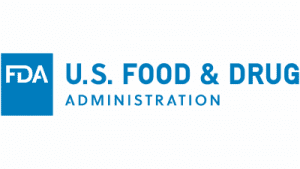
Murat Kalayoglu, MD, PhD, President & CEO, Cartesian Therapeutics, Discusses New Frontline Therapy Treatment for Multiple Myeloma
Cartesian Therapeutics, a biopharmaceutical company that specializes in mRNA-engineered cell therapy, recently announced the start of a Phase 2a clinical trial of its mRNA chimeric antigen receptor (CAR) T-cell therapy, Descartes-11, in patients with newly diagnosed, high-risk multiple myeloma.
DocWire News spoke with Murat Kalayoglu, MD, PhD, President and Chief Executive Officer at Cartesian Therapeutics, to learn more about this trial and the therapy.
DocWire News: Your company recently announced the initiation of a phase 2 clinical trial for frontline treatment of multiple myeloma. Can you talk to us a little bit about the treatment and the study in general?
Dr. Murat Kalayoglu: Sure. Yeah. This is an mRNA engineered CAR T therapy for treatment of patients with newly diagnosed, multiple myeloma. These cells are engineered with mRNA as are all of our cells that are in clinical trials and also in development. The reason we focus on mRNA engineering is because we’re out to create potent yet safer cell therapies so that they can be used not just in advanced cancers, but also in frontline cancers, as well as even beyond oncology. In our case, in autoimmune disease and respiratory disease. This current program, Descartes-11, is an mRNA engineered CAR T that is targeting a very popular ubiquitous target called B-cell maturation antigen. This was originally developed with some technology that was generated from the NIH and has now been transferred over to Cartesian, supplemented with our existing technology to be able to generate tens of billions of cells in a given production run. And so the cells are frozen, aliquotted and then administered through repeat dosing within the context of a frontline treatment regimen.
DocWire News: What’s the desired outcome of this trial?
Dr. Murat Kalayoglu: The overall design is to improve the percentage of patients that are entering a deep remission, a molecular remission or minimal residual disease negativity at the end of treatment. Often the problem with multiple myeloma as it is with many cancers, in fact many other diseases is that treatments, innovative treatments are often administered at the very end stages of disease. And it’s always easier to treat a disease when it’s newly diagnosed or into earlier in the treatment paradigm. And it’s certainly true with multiple myeloma because every time the disease relapses, the remissions that follow become shorter and shorter. Multiple myeloma has really benefited over the last couple decades from an enormous number of innovative therapies that often percolate into a frontline setting in one shape way or form at some point. And the ability to treat a patient with differentiated therapies in the beginning has allowed these remissions to last longer and longer.
Unfortunately, it’s still considered an incurable disease. What we’ve tried to do is to think of ways in which to bring cell therapy and integrate it directly into a frontline setting, to allow it to be able to integrate seamlessly within the existing standard of care paradigm. And so this particular product, given the fact that it is mRNA engineered, allows us to be able to do that for a couple reasons. Number one, it’s safer so it can actually be used. It doesn’t lead to the kinds of side effects that are now synonymous with CAR T therapy. In our safety data set in relapse refractory patients, we have not seen any evidence of cytokine release syndrome, any evidence of neurotoxicity. It’s a safer product.
Number two, because we’re repeat dosing and administering the full dose every single dose, we’re not in need of clearing the marrow to allow the cells to proliferate into it. Similar to how one would do it with conventional DNA engineered CAR T therapies. And so there’s no need to administer a pre-conditioning chemotherapy or a lymphodepleting chemotherapy, which in and of itself can be toxic. That toxicity is often well tolerated in a relapse refractory setting, because the risk benefit ratio at that very advanced stage of the cancer, it requires that kind of treatment to be available. But in the frontline setting, we believe that a lymphodepleting chemotherapy, especially given the fact that the patient is feeling relatively healthy and has other combination therapies that are available to them is unlikely to be tolerated or preferred. And so we wanted to ensure that when we developed this product, that it could be used in the context of other combination therapies in the absence of lymphodepleting chemotherapy.
And the protocol design is actually quite unique because it allows us to be able to go in and out between the end of induction therapy and the beginning if a patient is eligible for it, a stem cell transplant. Upon the completion of induction therapy, after several cycles, we then go in, administer the product once every several days over the course of three weeks, stop and then ask, well, have we achieved a molecular remission at week four? And whatever the outcome is, the patient, the hope and expectation is that the patient’s going to be better prepared going into later lines of therapy and a stem cell transplant and beyond. The whole goal is focusing on MRD negativity because epidemiological data suggests that patients who achieve MRD negativity do much better long-term in their treatment.
The other important thing to remember here is that these patients were, at least in this study were newly diagnosed, have high risk characteristics genetically. And so the percentage of patients that achieve MRD negativity on their own is actually relatively low. And so we’re hoping that by improving the percentage of patients that achieve MRD negativity, that we’re going to be able to make a significant benefit in the long-term treatment of these patients.
Click here to read more via docwirenews.
- About the Author
- Latest Posts
BioBuzz is a community led, experience focused, biotech and life sciences media and events company. BioBuzz highlights regional breaking news, industry professionals, jobs, events, and resources for business and career growth. Their weekly newsletter is subscribed to by thousands in the BioHealth Capital Region and Greater Philadelphia as the go-to for industry updates.




